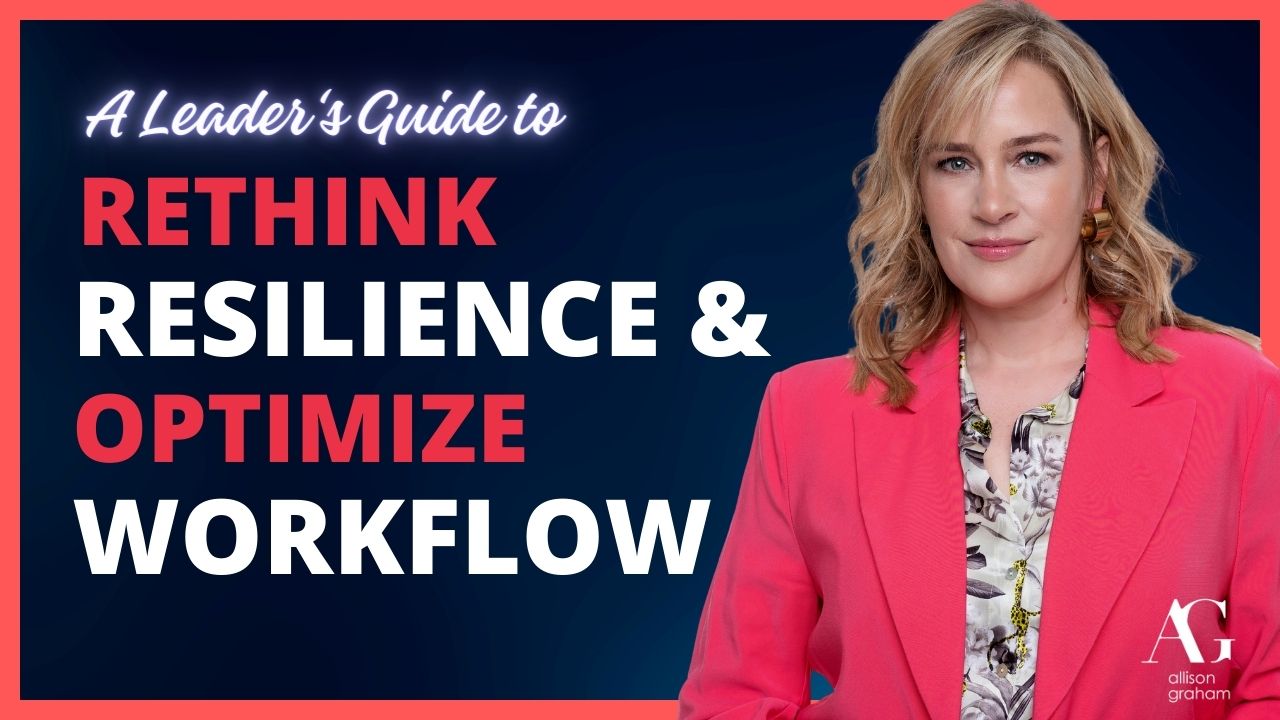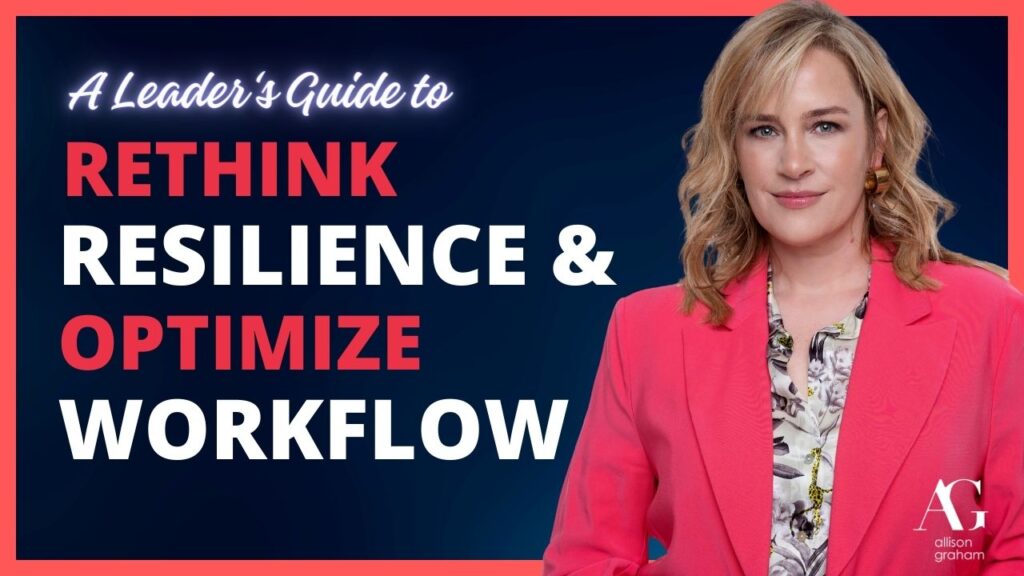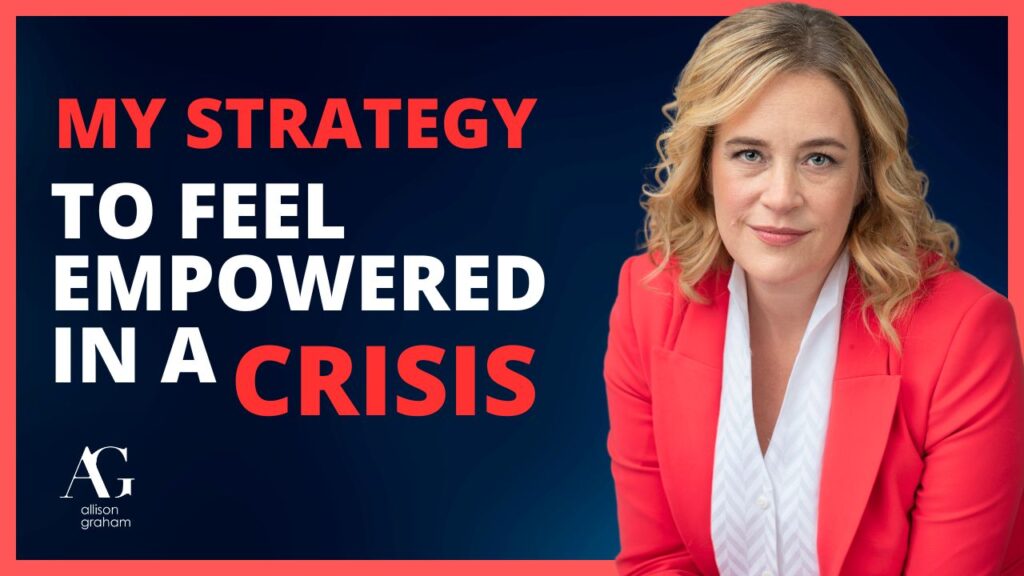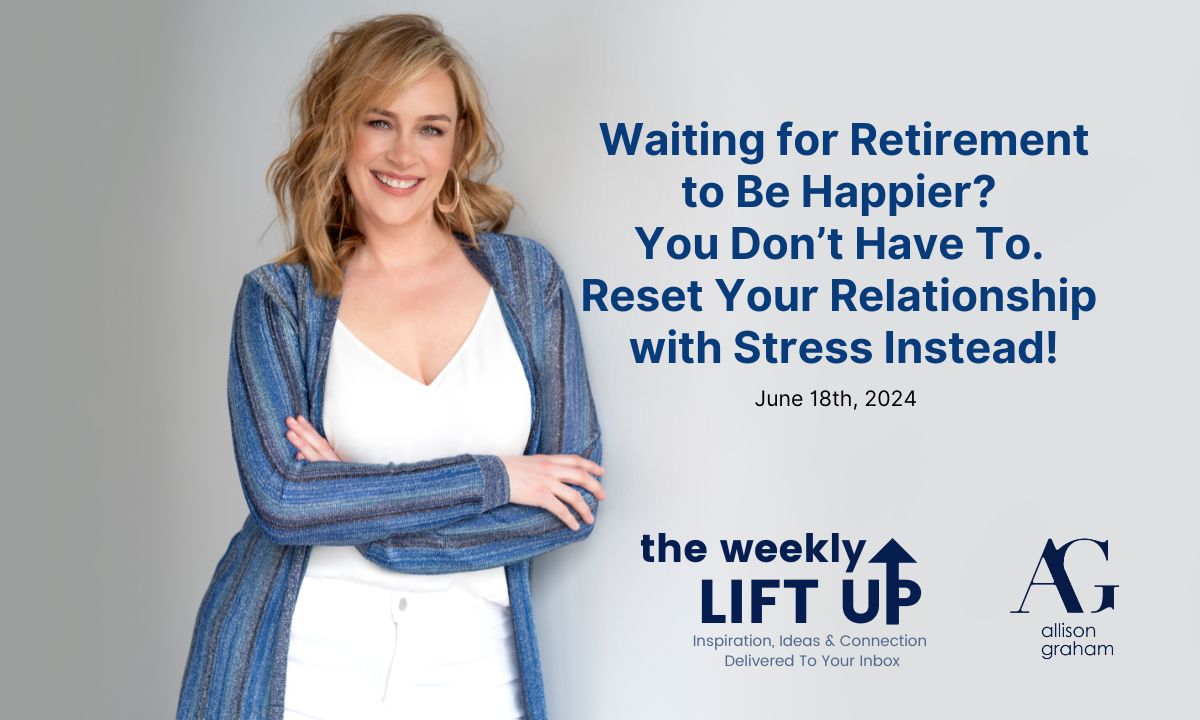Forget everything you know about resilience and consider the Triple Resilience Model instead.
Table of Contents
Many leaders believe resilience is something you either have or you don’t; that it can’t be taught. Therefore, rather than engaging in the seemingly painstaking process of proactively empowering a problem-solving culture filled with resilient leaders and employees – many leaders rely on themselves and their star performers to be the grounded backbone of their organization.
Those who have proven their resilience often are the ones who:
- prop up the mood of others.
- pick up the slack when others can’t cope.
- rarely have time for their own priorities during the designated workday.
- are the voice of reason in overwhelming situations.
No wonder leaders are exhausted.
Over time, this creates resilience resentment among the most resilient professionals. Frustration intensifies as they are forced to fight proverbial fires that aren’t their responsibility. Many of those fires would never have been ignited if others were more resilient.
Why Typical Resilience Advice Backfires:
The ambiguous nature of resilience makes it tough to teach. Most people can’t articulate HOW they are resilient so they default to widely accepted platitudes such as:
- Don’t sweat the small stuff and it’s all small stuff. (Actually, it’s not all small stuff.)
- Don’t take it personally, it’s just business. (Well, you may not care, but I do.)
- Don’t worry about what you can’t control. (But it’s the stuff that can’t be controlled that impacts our emotional and mental well-being the most.)
My personal pet peeve is being told, “You’ve just gotta bounce back.” Once I realized that the very notion of change is that there is no going back, I stopped trying to return to the past and focused on finding a path forward based on today’s reality.
These catchy, well-intentioned phrases are great reminders for those with well-developed resilience skills. Unfortunately, if the receiver lacks resilience in relation to the specific situation being addressed, they are likely to respond defensively and feel compelled to validate their stance.
I was one of those resilience-resistant people. That was, until my neurologist told me I would never work full-time again because of my post-surgical nerve pain. He said it was time for me to consider going on disability insurance. I was scared. What if he was right? Through desperate ugly cries and colorful language, I told him he was wrong – Dr. Wrong. He challenged me to be resilient. I left that hospital defiant. I was going to prove Dr. Wrong – well – wrong. Operation “Fix My Pain; Fix My Life” began.
As I embarked on my quest to maintain my career despite my physical and emotional limitations, I couldn’t understand why my resilience wavered so much. Sometimes I was unfazed by problems. I even called myself a Resiliency Ninja. It was this imagery I had of me swatting down problems in the back alley then emerging in public calm, cool, and collected as if nothing happened. I became very skilled at pretending I wasn’t fighting an epic battle behind the scenes.
Other times, I was a blithering mess: anxious, overwhelmed, and lacking objectivity.
I created the Triple Resilience Model to feel a greater sense of internal peace even when my world was falling apart. Problem solving became more intentional and I had a system to compartmentalize challenges. I learned to respect the big, important issues, and quickly deal with the little, inconsequential stuff that could create future friction if ignored.
The Shift in Perspective That Changed My Life:
I stopped pretending that all resilience is the same.
The Triple Resilience Model separates resilience into three categories:
- Macro Resilience
- Micro Resilience
- Reverse Resilience
Each kind of resilience is useful for different types of challenges and combats different types of stress. Each requires different skills to activate and will achieve a different result.
Think of it like this:
- the type of challenge you face
- influences the type of stress response you’ll have
- which determines the type of resilience you’ll need
- which dictates the best type of tool you’ll need to deploy
- which creates the type of result you will achieve
In summary, the reality of problem solving for human dynamics boils down to:
Type of challenge → type of stress → type of resilience → type of tool → type of result
In society, we’re taught to focus on tools to achieve a result. The more I observe problem solving, the more I believe we’re overloaded with tools and tactics.
Many professionals can tell you the top 10 ways to organize their to-do list or the best 5 ways to regulate emotions – and yet, they still feel disorganized and overwhelmed.
When a leader calls me to talk about solutions to stop the toxic behaviours that have crept into their team’s dynamics, I ask them what tactics they’ve tried. Inevitably, it’s a long list. It’s not the effort and heart that let them down, it’s the tools they chose that kept them stuck and allowed toxicity to grow.
If you want better results, don’t start with the tools.
Start by better identifying the challenge and honouring the type of stress response that evokes. The stress type will fuel, drain, or neutralize resources. That clarity will inform the type of resilience that’s required, which, in turn, dictates the best next steps to take and, therefore, which tool is most likely to achieve the desired result.
Once you understand the elements of this framework, the deduction process is fast, but doing so will save hours of frustration trying to fix the wrong issues in the wrong ways. This is why resilience deserves greater respect in the quest to create harmony in the workplace and optimize performance.
Breaking Down the Triple Resilience Model: Macro Resilience, Micro Resilience and Reverse Resilience
Macro Resilience is the instinctual way we overcome the biggest challenges and changes in life. Adversity appears. We hurt. We grieve. We adapt. We can’t escape it. Despite trying to deny or deflect the worst sensations, they will happen. The process can be fast or slow. It can be messy and heart-wrenching, or it can be thrilling and rewarding!
Looking back in time, macro-resilience experiences are the major turning points in life. Having a child. Getting married. Losing a loved one. Experiencing a tragedy. It’s the response to the events that forever change the way you know life to be.
For those who think resilience is a soft, unteachable topic, macro resilience may be to blame for two reasons.
Firstly, when we consider resilience, we tend to think of these monumental problems that happen sporadically rather than seeing resilience as a valuable minute-by-minute resource to effectively navigate day-to-day activities, obstacles, and relationships.
Secondly, macro resilience is so engrained in our essence that it’s easy to take it for granted. It doesn’t need to be learned; it just is. Knowing how to grieve doesn’t eliminate grief. Knowing that having a baby is life altering doesn’t stop the alterations. There is nothing specific to be done to force the progression of macro resilience. Thanks to instinct you’ll eventually adjust to a ‘new normal,’ whether you like it or not. The only way to accelerate the inevitable is to avoid behaviours that aggravate the adversity.
Macro-resilience moments define the overall direction of a person’s life, whereas the skill of micro resilience defines a person’s quality of life.
Micro Resilience is the skill of dealing with inevitable challenges at a smaller, more-focused level. Micro resilience is the response to day-to-day irritations, obstacles, and relationship dynamics that consume finite mental, emotional, and physical resources. For example, disagreements with colleagues, missed deadlines, traffic delays, financial struggles, unmet expectations, or heavy workloads.
To varying degrees, we’re all innately resilient at a micro level. Time allows the stress response to settle naturally by creating perspective and giving intense emotions a chance to run their course. Micro resilience is why we’re no longer pouting about a friend taking our toy in grade one (hopefully), or why we feel better about a day’s frustrations after a good night’s sleep.
Unlike with macro resilience though, micro resilience is a skill that can be cultivated and applied repeatedly. Once developed, it allows you to fast-track the stress response and resolve issues in a way that does not carry the residual angst from one problem into an unrelated situation.
The Power of Micro Resilience
Those with the most developed micro-resilience talent can:
- Leave a contentious meeting without letting the negativity linger and overshadow their performance and presence when they arrive at their next meeting.
- Have a chaotic morning at home and still be excited and focused when they arrive at work.
- Meet a deadline, even when their tech glitches, without getting overwhelmed or losing their professionalism in the heat of the moment.
The more mentally and emotionally disciplined a person is, the more quickly they can activate their micro-resilience muscles and free capacity to focus on their next priority.
Many people have become incredibly talented at dealing with situations at a micro level. There are Resiliency Ninjas all around us. You have no idea what problems they are fighting in the back alleys as they emerge for their next team meeting looking calm, cool, and collected.
The Ultimate Problem-Solving Tool: Reverse Resilience
Reverse resilience is a system to proactively resolve repeating moments of angst so that they no longer exist in a way that requires micro-resilience muscles to activate. A challenge may never go away, but our stress response to the challenge can shift, thus diminishing the need to be resilient.
For example, most jobs consistently require a heavy workload. If you have negative emotions or storylines attached to that reality, you’ll always be at risk of feeling overwhelmed by work. Reverse resilience allows you to just do tasks and solve obstacles as they arise without extra fanfare or drama. You no longer have to use resources to combat the worry or overwhelm that often comes with having too much to do, in too little time with too few resources.
The Interplay of the Triple Resilience Model
Once I understood the distinction between macro resilience, micro resilience, and reverse resilience my own resilience response made more sense. It helped me realize why sometimes I was a Resiliency Ninja and unfazed by the problems of the day, and why, at other times and when facing different situations, I felt overwhelmed and less objective.
Each type of resilience influences another.
Macro resilience consumes mental, emotional, and physical resources that can overshadow micro-resilience capabilities. You can’t stop the sensations of mourning loss or responding instinctually to challenges that threatened you and your family’s safety. Understanding that, allows you to adjust accordingly.
A lack of micro resilience will complicate the natural unfolding of macro resilience by adding extra unresolved issues into the mix. The opposite is true as well. Strong micro resilience skills will free resources to experience macro resilience moments more intentionally.
Reverse resilience directly impacts your available capacity for macro and micro resilience.
The only way to truly practice reverse resilience is to stop resisting the reality of macro resilience, and to start amplifying micro resilience. That liberates more capacity to do the deep work that achieves the desired result of reverse resilience.
Reverse Resilience Success Stories
Here are two of my favourite reverse resilience success stories from my clients:
- After my flagship training program, a company’s staff resolved their resentment toward the leadership team’s expectations. They shifted their response to the constant barrage of new tasks that needed to be done ‘yesterday.’ Doing so, created less in-fighting, eye rolling, and undermining; therefore people felt less defensive. The leaders became more self-aware and more respectful communicators. The whole group (minus one tough cookie) accepted responsibility for their part in the workplace ecosystem. Fewer micro-resilience muscles were required to get through each workday. Those extra resources were earmarked for creating efficient workflows that alleviated repeated snags in client service delivery and inspired a more optimistic, productive, and unified company culture.
- A private coaching client released unrealistic expectations of himself. Rather than worrying about his overloaded to-do list, he got a grip on it. We implemented a customized system that actually worked to track his tasks and protected focused work blocks during regular working hours. This resulted in more refreshing, guilt-free time off with his family, and fewer sleepless nights worrying about what he’d missed. With better organization strategies in place, there were fewer crunch times and fewer dropped balls; therefore, fewer micro resilience muscles needed to engage. As long as he maintains his newly learned systems, (which, 18 months later he still is!) the old frustrations of worrying about work will remain a distant memory. That’s reverse resilience.
What’s your perspective on Resilience and the Triple-Resilience Model?
When you consider resilience from the lens of the Triple-Resilience Model – how does that shift your perspective? I hope you join me in believing that resilience is a foundational strength required by the entire team – not just the star performers.
P.S. A Caution about resilience in the workplace
It’s important to manage expectations when it comes to inspiring a resilient workforce. Someone with mighty micro-resilience muscles can be a maestro in one high-pressure environment, but that talent doesn’t automatically transfer to other situations. Having a framework to systematically implement micro resilience makes it easier to apply the skill universally.
Additional Resources for Training Programs, Online Courses and Motivational Keynotes
If you want a system to activate Micro-Resilience, check out my Rapid-Fire Resilience Rundown that I teach in my online course: Crunch Time Turnaround.
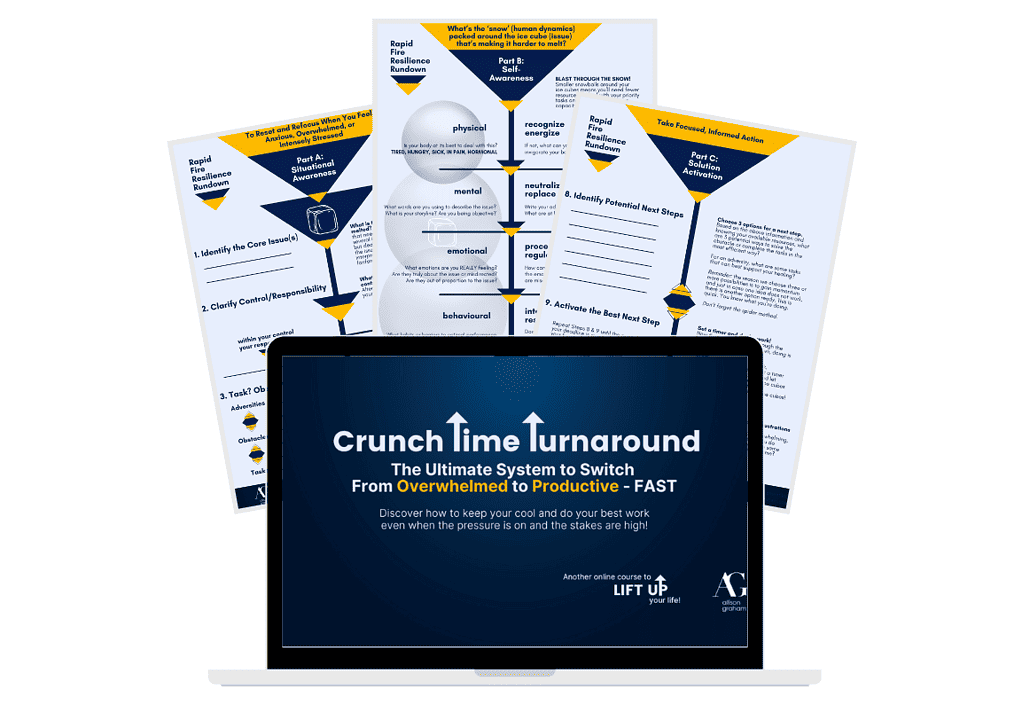
For information on my flagship training program and implementing Reverse Resilience for leaders and their teams visit my training page or keynotes page.
To take control of your time with my Task Circle Methodology check out my online course Optimize Your Workweek.
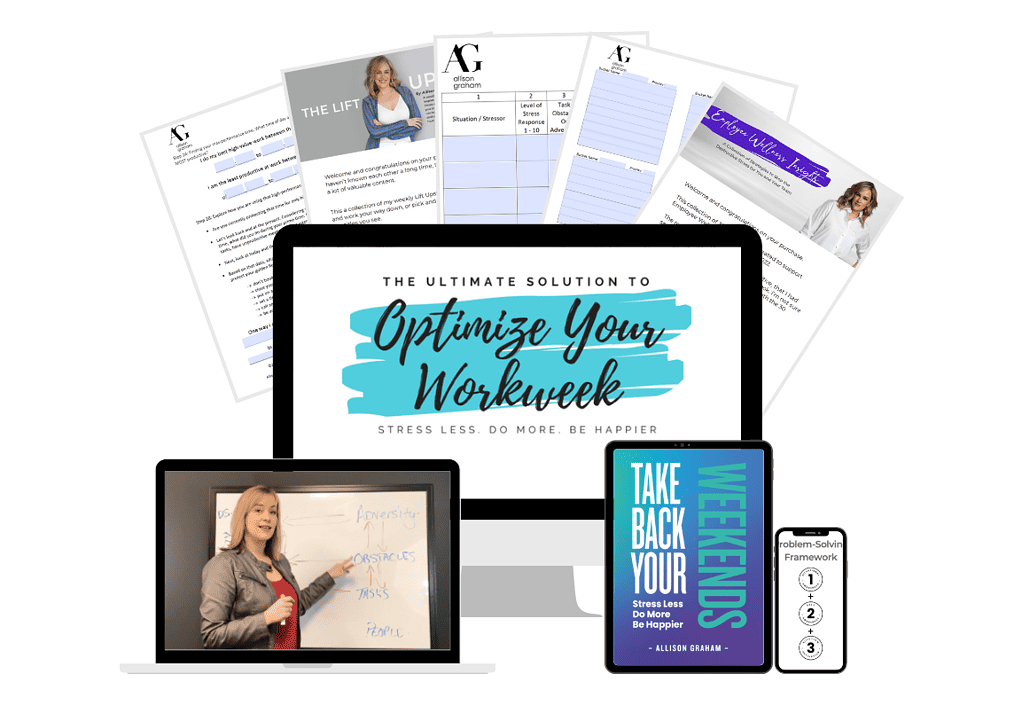
Follow along on LinkedIn or YouTube for more insights.
Other Popular Content
popular content
There are hundreds of articles, videos, and posts that cover topics like these highlighted below. Check in regularly for updates to my blog and don't forget to register for the weekly(ish) Lift Up email!
- Stress-Free Vacations: Is Time Off a Chance to Recharge or Collapse?Taking guilt-free time off from your leadership role is the most important step you can take to avoid burnout!
- Protected: Lean In Post Event Follow Up OptionsThis content is password protected.
- Protected: RBC Post Conversation RecapThis content is password protected.
- Don’t Wait for Retirement to Be Less Stressed!This line is heartbreaking: “When I retire, then I’ll be less stressed.” Don’t wait to quit work to stop burnout!
- Why Meditation Isn’t Fixing Your StressDiscover the real reason why stress levels haven’t budged even though we know more about mental health than ever before.
- Why Being More Productive Won’t Fix Your StressDiscover the real reason why stress levels haven’t budged even though we know more about mental health than ever before.
